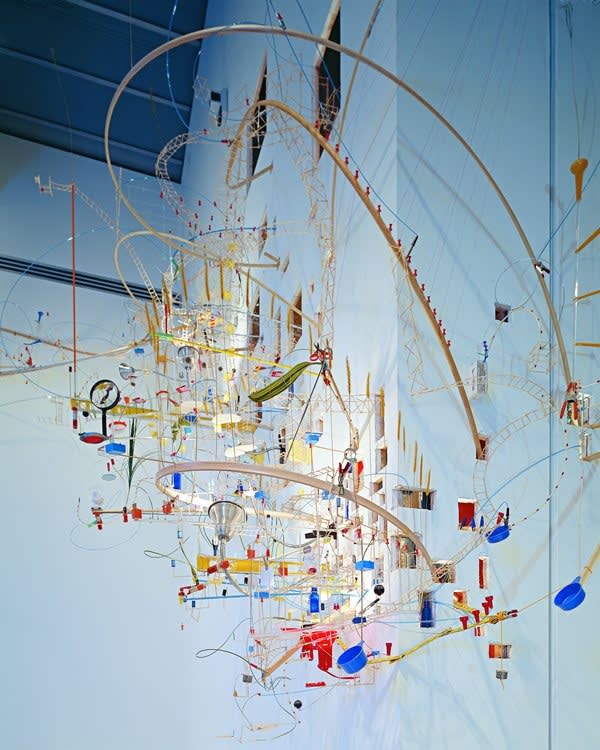Seamless, 1999, (on display until 22 November 2020) incorporates functional, human-scale items, for example a ladder. Other handmade elements, such as tiny bridges made from matchsticks, use a scale that relates to fictional miniature worlds. Spiralling structures also suggest the microscopic scale of molecular science. They resemble the double helix shape of DNA, molecules that determine the growth and reproduction of all living things.
The sculpture sweeps across the room in a way that appears seamless. Expanding into doorways, corners and even the space behind the walls, it draws attention to the architecture of the gallery. Seamless was first shown in Pittsburgh, USA, at the Carnegie International exhibition in 1999. Displayed for the first time since, it has been reconfigured to respond to the specific space of this gallery.
Sze includes cheap, everyday objects, connecting the work to contemporary consumer culture. But Seamless also refers to art historical sources from the early twentieth century. Its structures and shapes relate to constructivism, abstract art that reflected the modern industrial world. And by using the colours red, blue and yellow, Sze recalls De Stijl. This modernist art movement promoted ‘pure’ abstraction using only straight lines and primary colours. Seamless is displayed together with Piet Mondrian’s Composition C (No.III) with Red, Yellow and Blue 1935 to highlight these references.
Image: Sarah Sze, Seamless, 1999
© Sarah Sze







